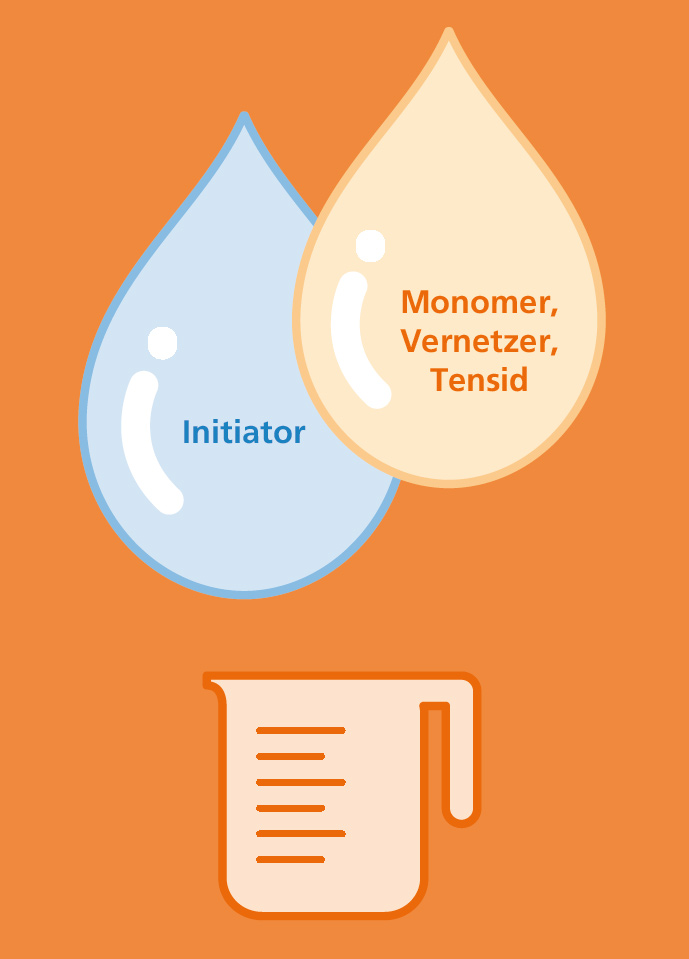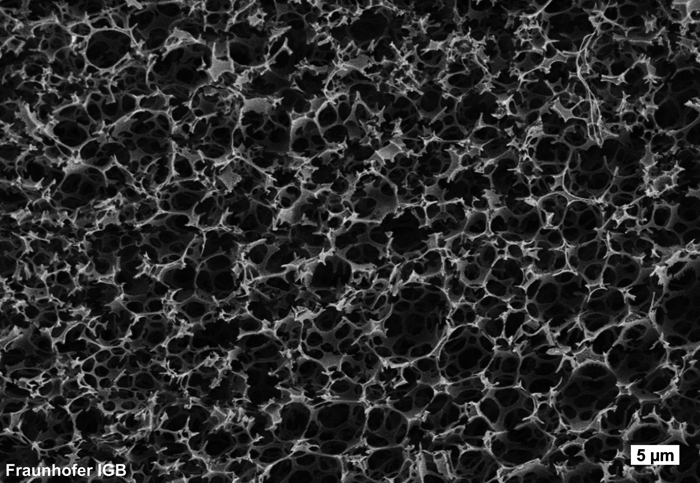Application potential

Open-pored polymeric foams are interesting materials for a variety of applications, especially as adsorber materials for substance separation or substance accumulation, as carrier material for chemo- or biocatalysis and as three-dimensional carriers for mammalian cells or microorganisms. Foams made conductive by suitable additives are even suitable as electrode material for biofuel cells. For the above-mentioned applications, the inner surface of the pores must usually be equipped with functional groups or molecules. Depending on the pore structure and the type of polymer used for the foam, this has not been possible to date, or only at great expense.
 Fraunhofer Institute for Interfacial Engineering and Biotechnology IGB
Fraunhofer Institute for Interfacial Engineering and Biotechnology IGB

